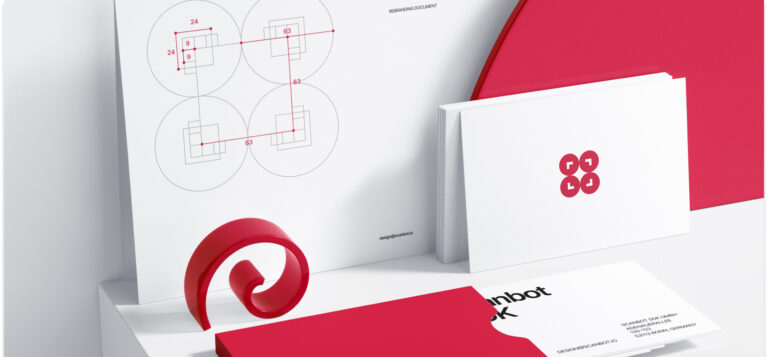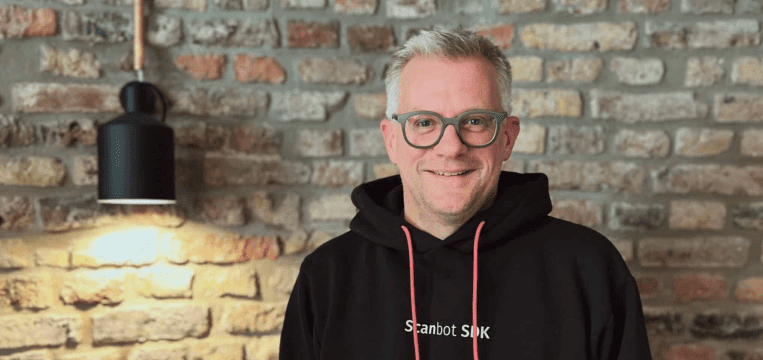Today, we invite you to join a deep dive into the world of Customer Success with our Head of CSM, Malte Geuthner. He’ll share the essential principles, strategies, and values underlying our customer-centric mindset.
Let’s now look at how we nurture a culture that prioritizes our customers and how we use their feedback to make meaningful improvements to our scanning solutions.
1. To start with, can you give us a quick overview of Customer Success Management at Scanbot SDK?
Sure! So from my point of view, we have one primary goal: empowering our customers to maximize the value they derive from our solution. We achieve this by listening and acting on our customer’s feedback, encouraging close cooperation across different departments, including Sales, Product, and Engineering.
This cross-functional approach ensures that our customers receive a top-notch product as well as comprehensive support and guidance throughout their journey. We can address all customer needs by aligning our efforts across these departments, from continuously adding new product features to technical assistance. This collaboration is the core of our Customer Success Management strategy.
2. What’s your strategy for resolving issues efficiently and promptly?
Scanbot SDK is all about putting our customers first, and so we want to offer enterprise-level support if they run into any questions. I believe in starting that support right away, as soon as someone shows an interest in our solution. So, even before they officially start using our solutions, we offer free assistance.
This way, we can connect with potential customers, answer their questions, and show them how dedicated we are to providing outstanding service right from the start. All in close collaboration with the Sales team, of course.
Our approach to excellent support is pretty straightforward. We’re here to help through many channels – such as Slack, MS Teams, phone calls, or just good old email. We want our customers to feel like they can reach out in the way that suits them best. Whether they prefer real-time chats, detailed documentation, or personalized suggestions, we ensure they have the best experience possible throughout their journey with Scanbot SDK.
3. How does Scanbot SDK ensure that customer feedback is effectively shared within the organization?
At Scanbot SDK, we’ve created an excellent system for distributing customer feedback to the right people.
First things first, we keep our management in the loop. Our C-level executives get regular reports that break down all customer feedback details. We talk about what they said and why it’s essential. This helps them understand our customers’ points of view and ensures that the company goals align with what our customers need.
But that’s not all! We’re also the voice of our customers within the company. That means we’re bridging the gap between our functional teams, like Engineering or Product, and our enterprise clients. We’re there to represent them whenever they have something to say – feedback, concerns, or ideas. We ensure that everything customer-related gets sorted out fast and make all decisions with our customers’ requirements in mind.
4. How do you integrate this customer feedback into your solution development?
We really go the extra mile to learn more about our customers’ needs and requirements. This includes gaining a deep understanding of how our solutions are put to work in the real world.
Plus, the CSM team has a direct line to our engineering teams and the CTO to ensure we’re all on the same page. This constant exchange helps us keep our product roadmap in sync with what our customers say. We want to be super agile and adapt rapidly to their ever-changing needs. Interestingly, around 10% of our support requests ask for new features. We collect these and prioritize the most in-demand ideas.
Of course, we also give customers the chance to beta test new features and enhancements first. It’s a win-win situation: Our customers get a say in how the solutions they’re using are developed, while we get to tailor our solutions to real industry requirements. That back-and-forth is an excellent way of ensuring that our mobile data capture solutions align with our customers’ wants.
5. How do you foster the customer-centric culture within your organization?
At Scanbot SDK, we’re all about making sure every team member truly understands the impact their work has on our customers and the industries we serve. It’s not just about the job, but also about the real difference we make. For example, we visited customers to see the integration of our MRZ Scanner at their boarding terminals firsthand to understand how we can further optimize our solution for their use case. Only by seeing these scans firsthand and taking the time with our customers to discuss their highest priorities, we’re we able to build a custom setup of the SDK for them that enables MRZ scanning with 99% accuracy.
When new team members join the company, we kick things off with a presentation where I talk about our customers. We dive into various industry requirements and their use cases. I do this because I want to make every team member understand how our solutions solve real problems. They make lives easier for millions of Monthly Active Users (MAUs), and that’s what I want to bring across right from the start.
And we don’t stop there. Our monthly all-hands meetings have a particular spot just for our customers. It’s where we chat about their feedback, celebrate success stories, and share the use cases of our newest partners.
So, we’re all about keeping it personal and ensuring everyone on the team knows they’re part of something bigger – something that matters to our customers.
6. Can you share specific instances where this approach directly increased customer value?
Our commitment to actively listening to our customers and getting a firsthand look at how they use our products in their real-world scenarios has yielded some pretty impressive results.
We’re talking about a range of experiences, from addressing those seemingly small yet critical customer requests – like giving them more control by adding specific settings in our SDK – to ensuring support for a particular barcode type, as we did in collaboration with BarTrack.
These seemingly minor tweaks have significantly impacted our customers’ overall satisfaction with our solution.
But we’re not just providing such minor tweaks, of course. Our partnership with the ALH Group showcases our ability to take on substantial projects. Together with them, we’ve made our Flutter SDK fully customizable through our Classical UI Components. Through this sizable effort, they were able to fine-tune our solution to their precise needs. The result is an app that doesn’t just fit their company branding guidelines, but also incorporates custom fields to improve the user experience greatly.
7. Is there an industry-specific example of value creation you would like to share with us?
I’d be happy to share how we tackled a major challenge in the insurance industry.
Insurance companies were struggling with digitizing the in-person registration of new clients. Here, it’s all about making the process smoother, minimizing human error while inputting personal info from ID cards, and speeding up the whole onboarding phase.
The solution: We developed an ID card scanner that turns the data straight into key-value pairs, which enabled a new automated data entry process. Our insurance customers were absolutely delighted.
We then continued the conversation, listening closely to what our customers had to say. What we learned was that they were having a tough time with claims submitted through their customer web portal. The document scans that customers uploaded weren’t good enough for automated processing – a real pain point.
To tackle this issue, we developed the Web Document Scanner SDK, allowing insureds to create high-quality scans that can be automatically processed. This saves insurances a lot of time and money previously wasted on manual data entry and on asking users to re-send a scan. And this works straight from the web portal, so they don’t even need an app.
8. Lastly, would you like to share any noteworthy industry best practices you’ve discovered while working at Scanbot SDK?
In my time here at Scanbot SDK, I’ve come across some really interesting industry best practices. So, since we’ve already talked about how we support insurances, let’s take a deeper dive into this industry.
A great trick we’ve seen is using tutorial screens in scanning. These little helpers give users a step-by-step guide to the scanning process. This lets them quickly get the hang of things and produce high-quality results.
Here’s another game-changer: making our solution adaptable and user-friendly. We let our customers’ development teams tweak settings like the Automatic Capture, the Cropping Screen, and the Blur Estimator.
Especially in the insurance world, data accuracy and compatibility are crucial. We’ve found that it’s vital to get everyone on the same page about export formats and settings. Typically, the best option is to use our binarization filters and send files in the .tiff format to the backend. This keeps the data clean, cuts error rates, and enables a smooth integration.
These best practices have enhanced our solution’s value for insurance clients and provided useful insights for other sectors.
To wrap up this conversation, we want to thank Malte for sharing his knowledge and his inside view of Scanbot SDK’s constant dedication to your success. We can assure you that your requirements and suggestions will be a top priority throughout your journey with Scanbot SDK.
We look forward to starting a conversation with you!



